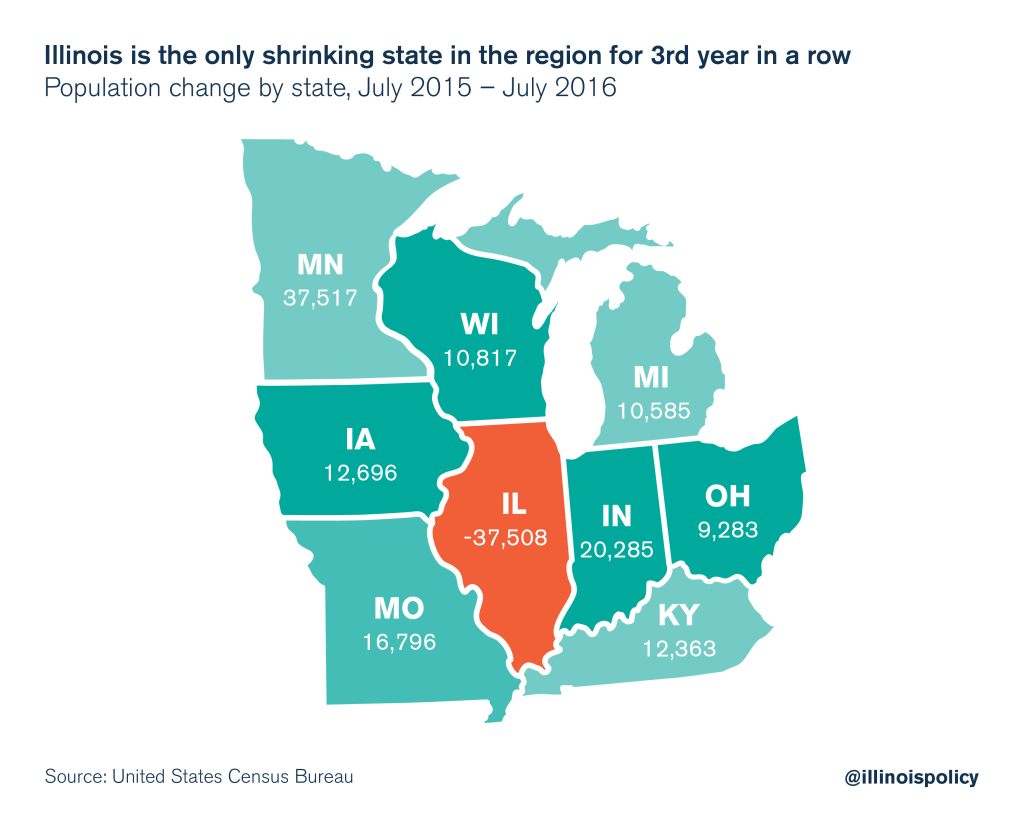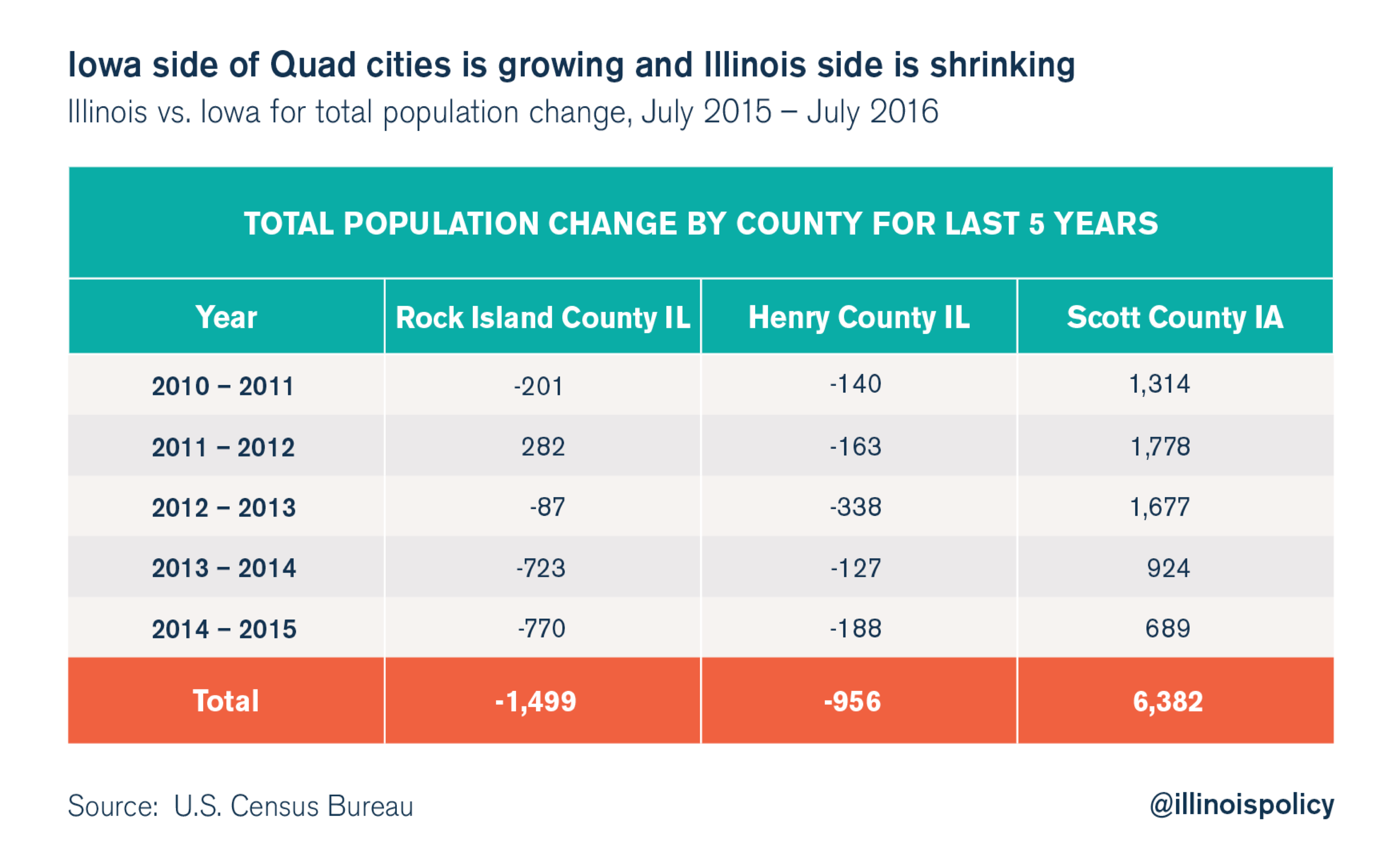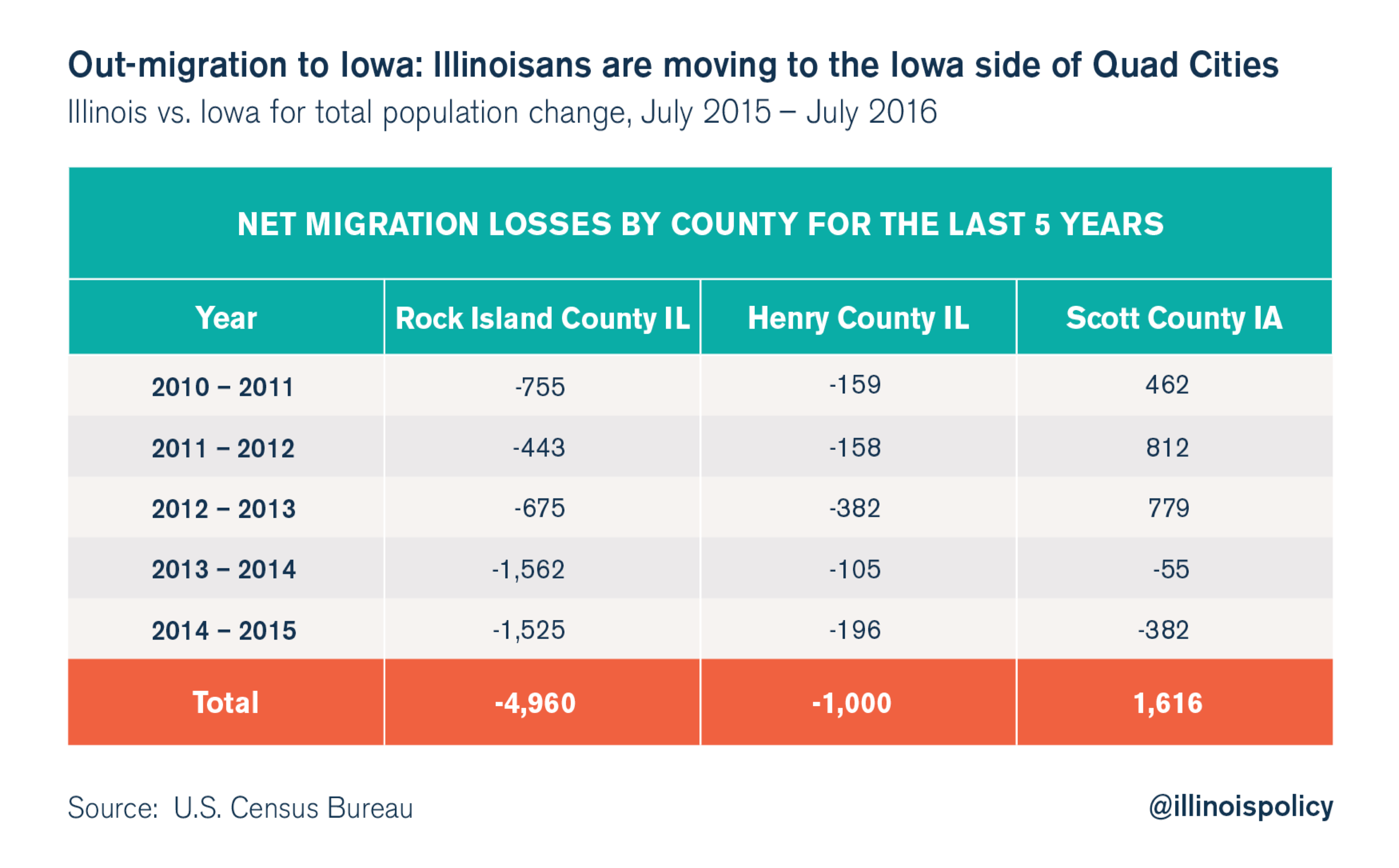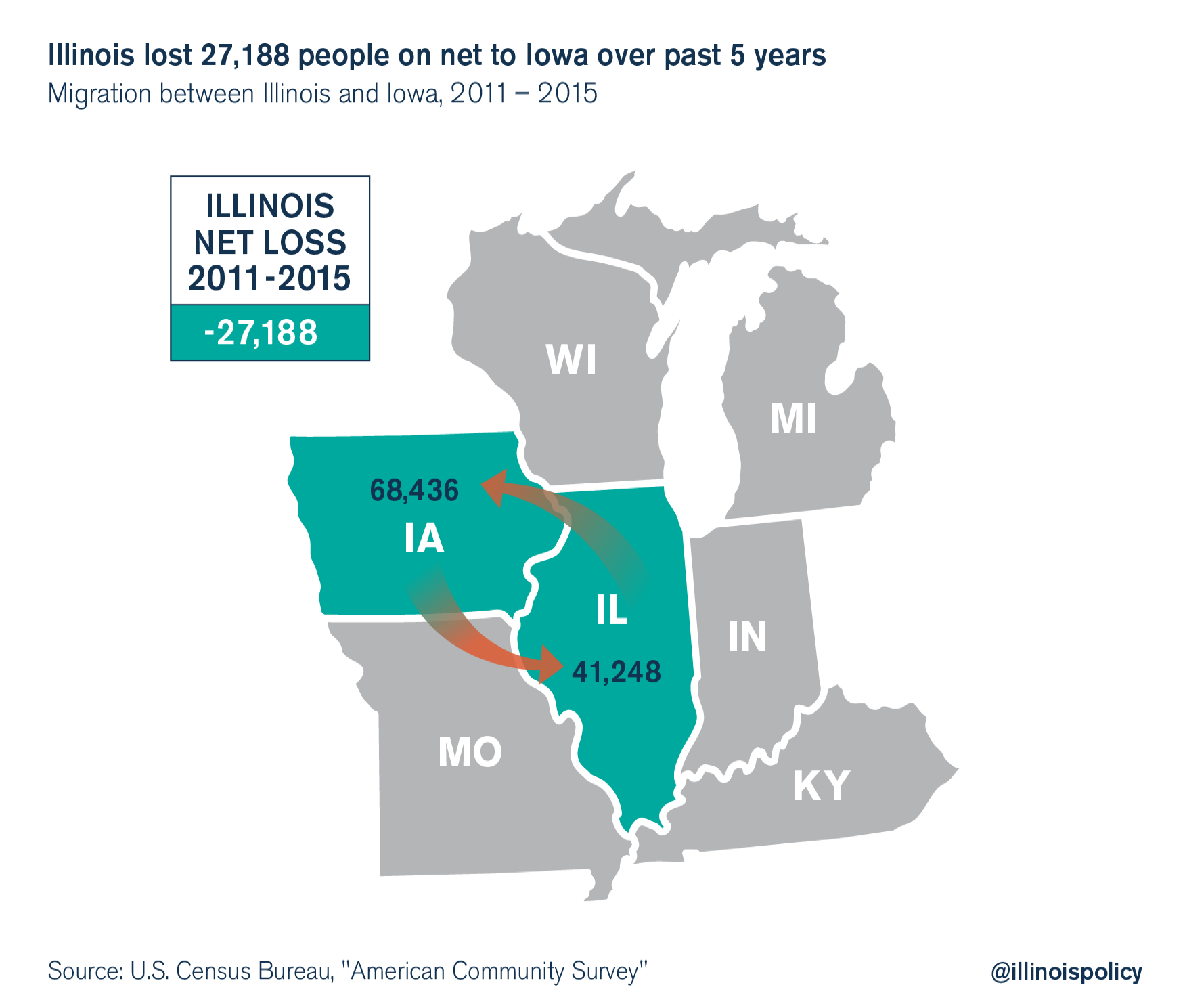In Quad Cities, Illinois shrinks while Iowa grows
The communities in the Quad Cities are nearly identical, but Illinoisans are fleeing to Iowa’s side from the Land of Lincoln’s side, showing just how severe Illinois’ out-migration crisis is.
The Quad Cities region of northwest Illinois and southeastern Iowa are a microcosm of the tragedy unfolding all across the Land of Lincoln. The Mississippi River separates the two states, and the four cities that make up this region. The Illinois side of the river is shrinking at the same time the Iowa side of the river is growing, revealing that Illinoisans are choosing to flee the state and move to nearly identical communities elsewhere. The most salient difference between the Illinois and Iowa cities is that they live under very different governments.
The total population of Illinois has shrunk the past three years, while the population of all surrounding states has grown. Most recently, Illinois shrank by 37,500 people from July 2015 – July 2016, according to U.S. Census Bureau data. The reason Illinois shrinks is because so many people leave Illinois for other states. Those losses are greater than the normal population gains Illinois makes from having more births than deaths and gaining international immigrants. Meanwhile, all surrounding states gain residents from Illinois, on net, helping their populations grow.

Zooming in to the Quad Cities, it becomes clear what is happening to Illinois. Residents are decamping from the Land of Lincoln just to cross the border into nearby states. Rock Island and Moline make up the Illinois side of the Quad Cities, while Davenport and Bettendorf make up the Iowa side. Over the last five years of migration data, Rock Island County (Ill.) has shrunk by 1,500 residents, Henry County (Ill.) has shrunk by 1,000 residents and Scott County (Iowa) has grown by 6,400 residents.

Illinois counties are shrinking because they have so much out-migration. Meanwhile, Scott County, Iowa is experiencing in-migration, almost certainly a direct transfer of people from the Illinois side of the river. Over the last five years, Rock Island County (Ill.) has had net out-migration of 5,000 people, Henry County (Ill.) has had net out-migration of 1,000 people, while Scott County (Iowa) has had net in-migration of 1,600 people.

Ironically, Scott County, Iowa almost certainly has marginal net out-migration to the rest of the country, not including gains from the Illinois side of the river. This is normal for many industrial areas across the Rust Belt. However, Scott County is lined up across the Mississippi River from a nearly identical population center Illinois politicians happen to govern.
What’s happening specifically between the Quad Cities is happening more generally between Illinois and Iowa. Over the last five years, 68,000 Illinoisans moved to Iowa while only 41,000 Iowans moved to Illinois, giving Illinois a net loss of 27,000 people to Iowa.

Illinoisans are clearly seeing a better life on the other side of the border, even when crossing the border simply means driving on the bridge from the Illinois side to the Iowa side of the Quad Cities.
Meanwhile, Iowa is moving ahead with reforms to gain even more Illinoisans. For example, the Iowa government recently passed laws to change the rules for government union collective bargaining so that elected leaders can control taxpayer costs. This will help Iowa control taxpayer costs and keep down their property tax burden, while Illinois property taxes continue to spin out of control.
Illinois’ legislature has shown no appetite for reform, and seems unconcerned about the population flight to other states. Until state government gets its act together, Illinois residents will continue to choose to live anywhere but Illinois.
